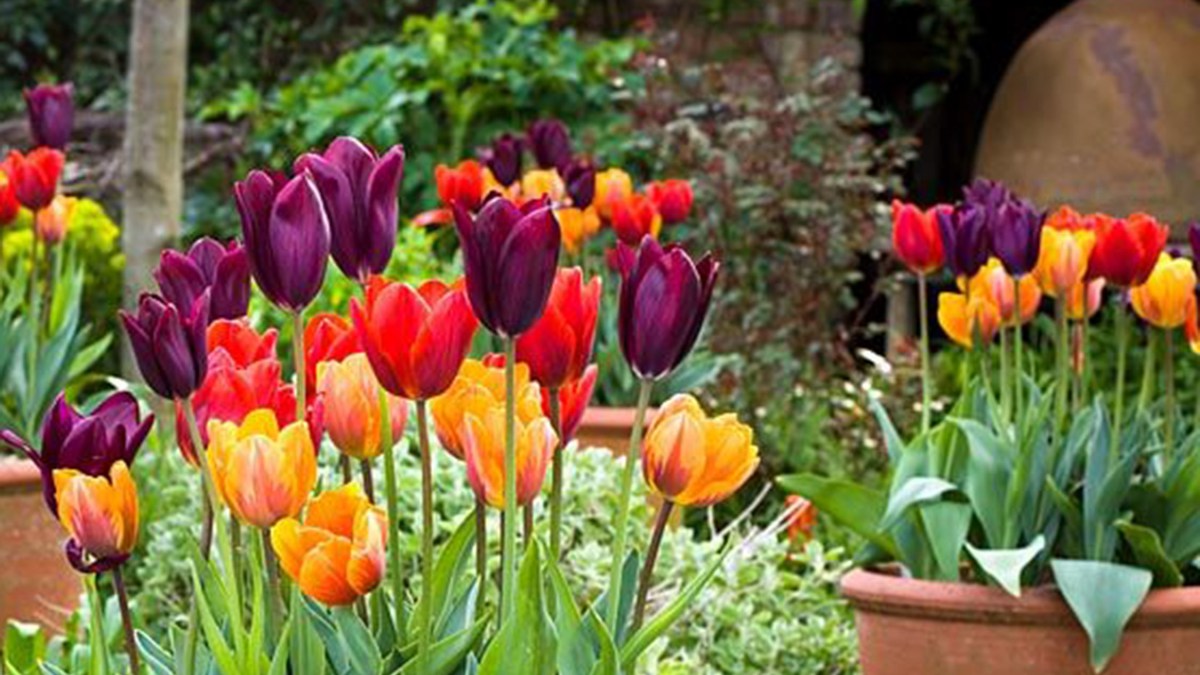If you’ve ever admired a garden bursting with bright red, yellow, pink, and purple tulips, you know how magical they look after a long winter. The secret behind that beauty? Proper planting. In this guide, we’ll show you how to plant tulip bulbs like never before, ensuring a breathtaking display of color in your garden every spring.Whether you’re in the United States, United Kingdom, or Canada, this easy and practical tutorial will help you grow tulips that truly stand out — even if you’re new to gardening!🌼 Why Tulips Are a Must-Have in Every GardenTulips are timeless. With their elegant petals and vibrant hues, they bring life and joy to any landscape. Originating from Central Asia and famously cultivated in the Netherlands, tulips are among the most beloved spring-flowering bulbs.Here’s why gardeners adore them:🌸 They bloom early, adding instant color after winter.🌿 They’re low-maintenance and easy to plant.🌷 Available in hundreds of varieties and shades.🌞 Perfect for garden beds, borders, and containers.So, if you’re ready to transform your outdoor space, let’s dive into how to plant tulip bulbs like never before!🪴 When to Plant Tulip BulbsTiming is everything when it comes to tulips.🌤 Best Time to PlantPlant tulip bulbs in fall, about 6–8 weeks before the first hard frost. This gives them enough time to establish roots before the ground freezes.United States & Canada: Late September to NovemberUnited Kingdom: October to early December🌡️ Pro Tip: Wait until the soil temperature is below 60°F (15°C). Planting in cooler soil helps prevent premature sprouting.🌱 Choosing the Right Tulip BulbsThe quality of your bulbs determines how impressive your flowers will be.🏵️ What to Look For:Choose firm, heavy bulbs — no soft spots or mold.Bigger bulbs usually mean bigger blooms.Buy from trusted garden centers or bulb specialists.Select a mix of early, mid, and late-blooming varieties for a longer tulip season.🌷 Some popular varieties: Darwin Hybrid, Triumph, Parrot Tulips, and Single Early Tulips.🌞 Choosing the Perfect Planting SpotTulips love the sun — at least 6 hours of direct sunlight each day.Ideal Conditions:Well-draining soil is essential (tulips hate soggy roots).Avoid areas where water collects after rain.Raised beds or slightly sloped areas work great.If your soil is heavy or clay-like, mix in sand or compost to improve drainage.🪴 Container Option: Tulips also thrive in pots. Just ensure containers have drainage holes and use high-quality potting mix.🌷 Step-by-Step: How to Plant Tulip Bulbs Like Never BeforeReady to dig in? Here’s your easy step-by-step guide:🏡 Step 1: Prepare the SoilLoosen the soil about 12 inches deep and mix in compost or organic matter. Healthy, aerated soil helps the bulbs establish strong roots.🌼 Step 2: Dig the HolesFor each bulb, dig a hole that’s 3 times as deep as the bulb’s height (usually about 6–8 inches deep).Space bulbs 4–6 inches apart, depending on the variety.🌷 Pro Tip: For a natural look, scatter bulbs randomly and plant them where they fall — it mimics how flowers grow in nature.🌸 Step 3: Plant Bulbs Pointy Side UpAlways plant bulbs with the pointy end facing up and the flat end (where roots form) down.Cover gently with soil, pressing lightly to remove air pockets.💧 Step 4: Water ThoroughlyAfter planting, water well to settle the soil around the bulbs. You don’t need to water them frequently during winter — nature’s rain and snow will do the job.🌿 Step 5: Mulch for ProtectionApply a thin layer of mulch or straw to help insulate the bulbs and prevent weeds. This also keeps the soil temperature steady during winter.🌺 Spring Care Tips — Watch Them Bloom!When spring arrives, remove the mulch as temperatures rise. Soon, you’ll see tulip shoots emerging!🌤 Care During Bloom:Water lightly during dry spells.Fertilize with a low-nitrogen bulb fertilizer once shoots appear.Deadhead (remove spent flowers) after blooming to save energy for next year.Let the leaves die back naturally — they feed the bulbs for next season’s growth.🍃 Do Not Cut the Green Leaves Early! Wait until they turn yellow before removing them.🌸 How to Make Tulips Come Back Every YearTulips are technically perennials, but many modern varieties behave like annuals. To encourage reblooming:Choose Darwin hybrids — they return year after year.Allow leaves to fully wither before cutting.Avoid overwatering in summer.Every few years, dig up and divide bulbs in late summer to keep them healthy.🌷 For consistent blooms, some gardeners replant fresh bulbs each fall — a simple trick for a guaranteed vibrant garden.🌻 Creative Ideas for Tulip DisplaysOnce you’ve mastered how to plant tulip bulbs like never before, get creative with your layout!🌈 Design Inspiration:Color Blocks: Plant one color per section for bold impact.Rainbow Rows: Mix tulips in gradient shades — red, orange, yellow, pink, purple.Mixed Beds: Combine tulips with daffodils, hyacinths, or pansies for texture and contrast.Container Magic: Layer bulbs of different bloom times for waves of color in pots.🪻 Tip: Plant tulips in groups of 10–15 bulbs for the most dramatic visual effect.💡 Troubleshooting Common Tulip ProblemsEven experienced gardeners face a few hiccups. Here’s how to solve them:Problem Cause SolutionBulbs don’t sprout Planted too shallow or rotted Ensure 6–8 inches depth, well-drained soilSmall flowers Nutrient deficiency Add bulb fertilizer in fall & springEaten bulbs Squirrels or rodents Cover beds with mesh or chicken wireEarly sprouting Warm fall Mulch thickly to regulate temperature🌸 Conclusion: Make Your Garden Bloom Like Never Before!And there you have it — everything you need to know about how to plant tulip bulbs like never before! 🌷By choosing the right bulbs, planting them at the proper depth, and giving them just the right care, you’ll enjoy a vibrant carpet of tulips that brings joy and color to your spring days.Whether you’re in a cozy UK cottage, a Canadian backyard, or an American suburban garden, tulips are the perfect way to say: “Spring is here!”🌼 So grab your gardening gloves, dig in, and get ready to watch your tulip dreams come alive — one bulb at a time.

